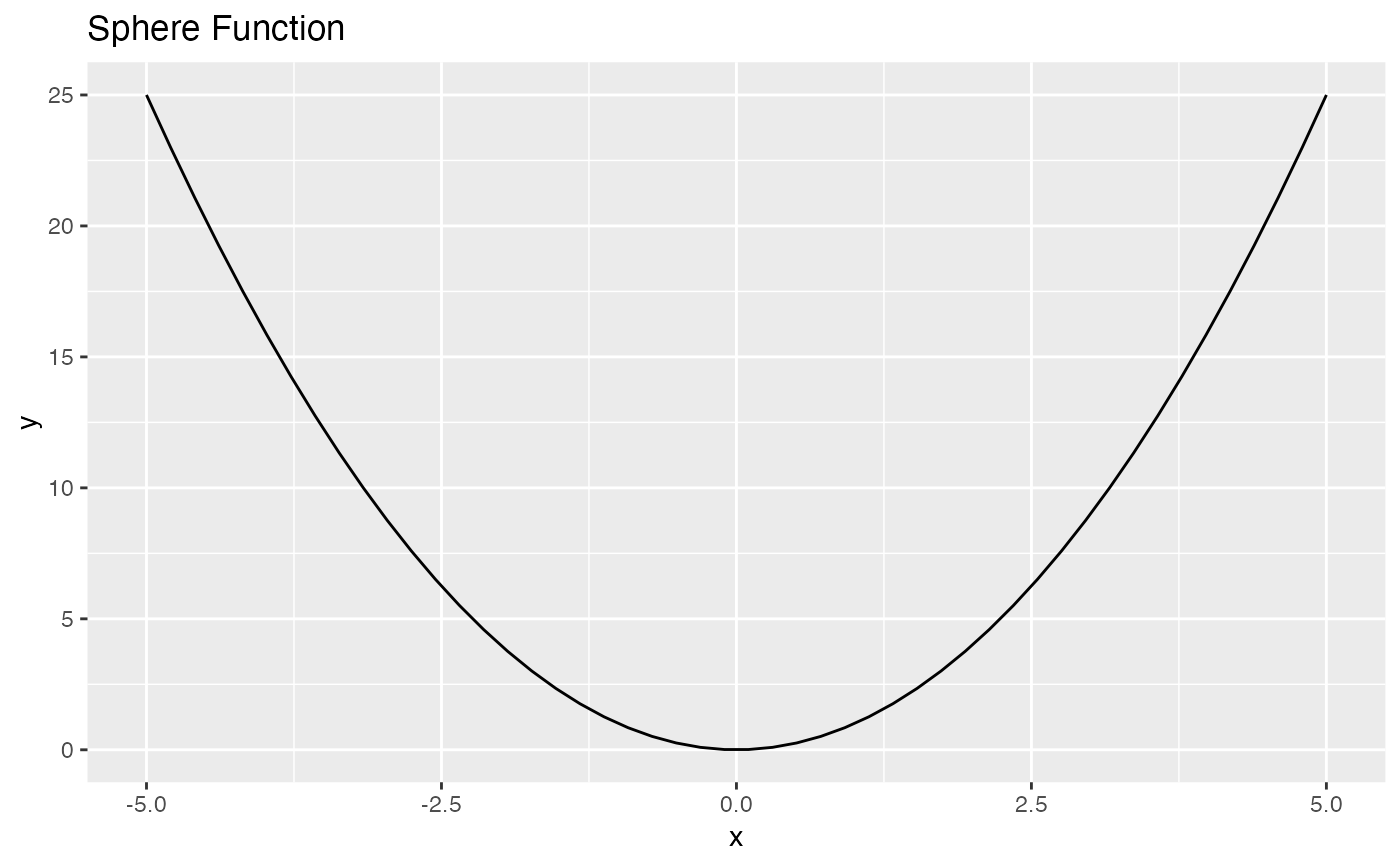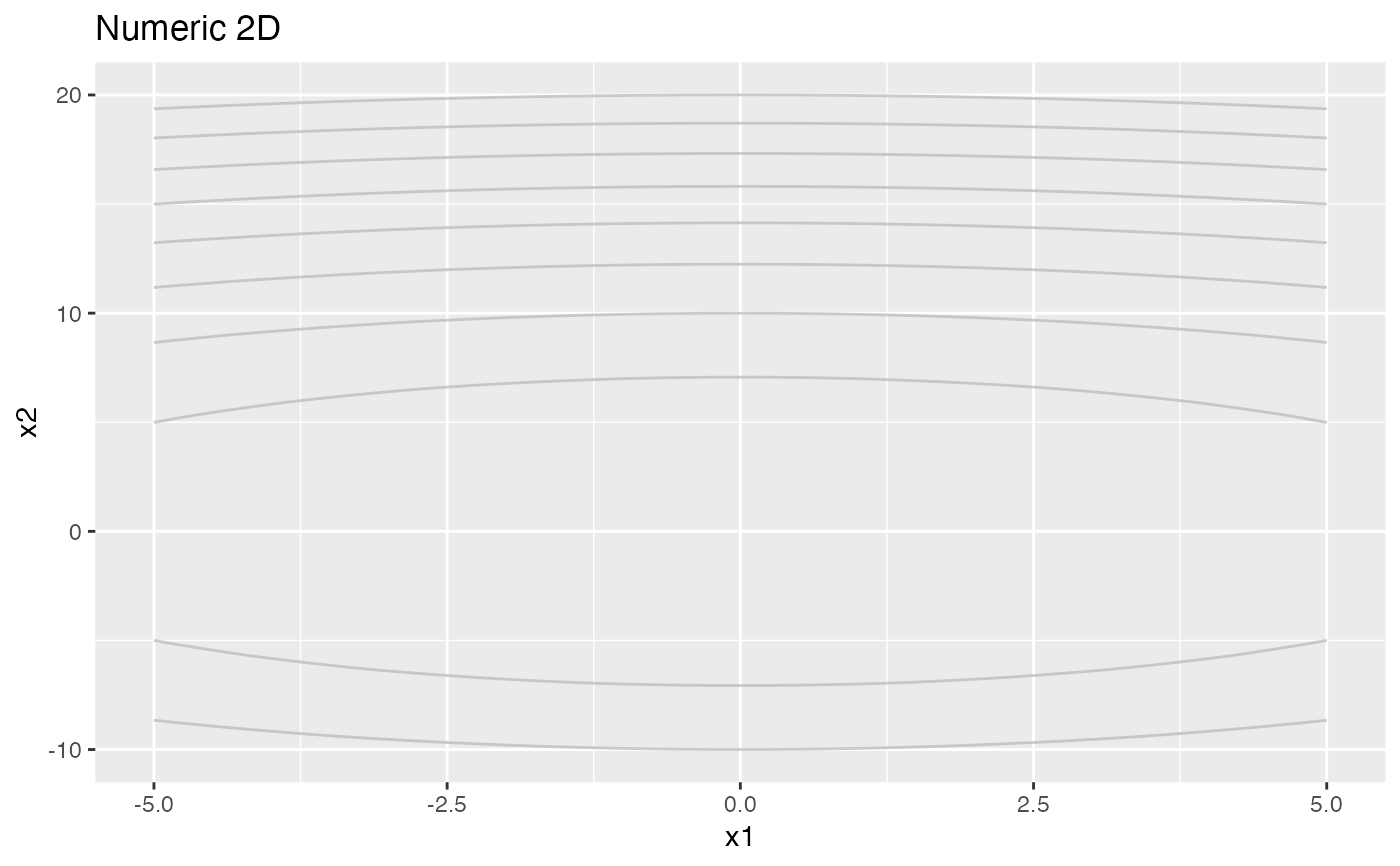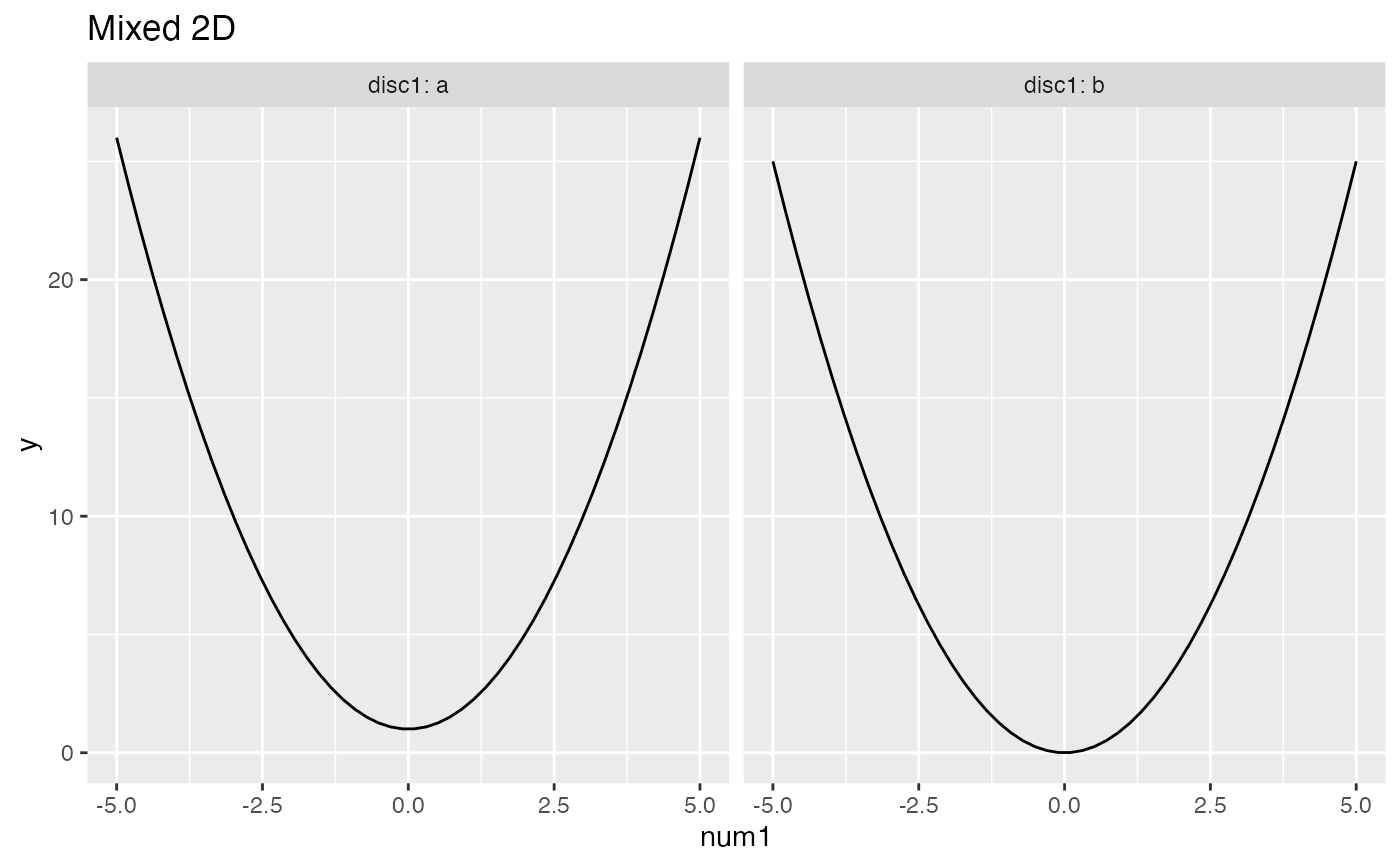Generator for single-objective target functions.
Source:R/makeSingleObjectiveFunction.R
makeSingleObjectiveFunction.RdGenerator for single-objective target functions.
makeSingleObjectiveFunction(
name = NULL,
id = NULL,
description = NULL,
fn,
has.simple.signature = TRUE,
vectorized = FALSE,
par.set,
noisy = FALSE,
fn.mean = NULL,
minimize = TRUE,
constraint.fn = NULL,
tags = character(0),
global.opt.params = NULL,
global.opt.value = NULL,
local.opt.params = NULL,
local.opt.values = NULL
)Arguments
- name
[
character(1)]
Function name. Used for the title of plots for example.- id
[
character(1)|NULL]
Optional short function identifier. If provided, this should be a short name without whitespaces and now special characters beside the underscore. Default isNULL, which means no ID at all.- description
[
character(1)|NULL]
Optional function description.- fn
[
function]
Objective function.- has.simple.signature
[
logical(1)]
Set this toTRUEif the objective function expects a vector as input andFALSEif it expects a named list of values. The latter is needed if the function depends on mixed parameters. Default isTRUE.- vectorized
[
logical(1)]
Can the objective function handle “vector” input, i.~e., does it accept matrix of parameters? Default isFALSE.- par.set
[
ParamSet]
Parameter set describing different aspects of the objective function parameters, i.~e., names, lower and/or upper bounds, types and so on. SeemakeParamSetfor further information.- noisy
[
logical(1)]
Is the function noisy? Defaults toFALSE.- fn.mean
[
function]
Optional true mean function in case of a noisy objective function. This functions should have the same mean asfn.- minimize
[
logical(1)]
Set this toTRUEif the function should be minimized and toFALSEotherwise. The default isTRUE.- constraint.fn
[
function | NULL]
Function which returns a logical vector indicating whether certain conditions are met or not. Default isNULL, which means, that there are no constraints beside possible box constraints defined via thepar.setargument.- tags
[
character]
Optional character vector of tags or keywords which characterize the function, e.~g. “unimodal”, “separable”. SeegetAvailableTagsfor a character vector of allowed tags.- global.opt.params
[
list|numeric|data.frame|matrix|NULL]
Default isNULLwhich means unknown. Passing anumericvector will be the most frequent case (numeric only functions). In this case there is only a single global optimum. If there are multiple global optima, passing a numericmatrixis the best choice. Passing alistor adata.frameis necessary if your function is mixed, e.g., it expects both numeric and discrete parameters. Internally, however, each representation is casted to adata.framefor reasons of consistency.- global.opt.value
[
numeric(1)|NULL]
Global optimum value if known. Default isNULL, which means unknown. If only theglobal.opt.paramsare passed, the value is computed automatically.- local.opt.params
[
list|numeric|data.frame|matrix|NULL]
Default isNULL, which means the function has no local optima or they are unknown. For details see the description ofglobal.opt.params.- local.opt.values
[
numeric|NULL]
Value(s) of local optima. Default isNULL, which means unknown. If only thelocal.opt.paramsare passed, the values are computed automatically.
Value
[function] Objective function with additional stuff attached as attributes.
Examples
library(ggplot2)
fn = makeSingleObjectiveFunction(
name = "Sphere Function",
fn = function(x) sum(x^2),
par.set = makeNumericParamSet("x", len = 1L, lower = -5L, upper = 5L),
global.opt.params = list(x = 0)
)
print(fn)
#> Single-objective function
#> Name: Sphere Function
#> Description: no description
#> Tags:
#> Noisy: FALSE
#> Minimize: TRUE
#> Constraints: TRUE
#> Number of parameters: 1
#> Type len Def Constr Req Tunable Trafo
#> x numericvector 1 - -5 to 5 - TRUE -
#> Global optimum objective value of 0.0000 at
#> x
#> 1 0
print(autoplot(fn))
 fn.num2 = makeSingleObjectiveFunction(
name = "Numeric 2D",
fn = function(x) sum(x^2),
par.set = makeParamSet(
makeNumericParam("x1", lower = -5, upper = 5),
makeNumericParam("x2", lower = -10, upper = 20)
)
)
print(fn.num2)
#> Single-objective function
#> Name: Numeric 2D
#> Description: no description
#> Tags:
#> Noisy: FALSE
#> Minimize: TRUE
#> Constraints: TRUE
#> Number of parameters: 2
#> Type len Def Constr Req Tunable Trafo
#> x1 numeric - - -5 to 5 - TRUE -
#> x2 numeric - - -10 to 20 - TRUE -
print(autoplot(fn.num2))
fn.num2 = makeSingleObjectiveFunction(
name = "Numeric 2D",
fn = function(x) sum(x^2),
par.set = makeParamSet(
makeNumericParam("x1", lower = -5, upper = 5),
makeNumericParam("x2", lower = -10, upper = 20)
)
)
print(fn.num2)
#> Single-objective function
#> Name: Numeric 2D
#> Description: no description
#> Tags:
#> Noisy: FALSE
#> Minimize: TRUE
#> Constraints: TRUE
#> Number of parameters: 2
#> Type len Def Constr Req Tunable Trafo
#> x1 numeric - - -5 to 5 - TRUE -
#> x2 numeric - - -10 to 20 - TRUE -
print(autoplot(fn.num2))
 fn.mixed = makeSingleObjectiveFunction(
name = "Mixed 2D",
fn = function(x) x$num1^2 + as.integer(as.character(x$disc1) == "a"),
has.simple.signature = FALSE,
par.set = makeParamSet(
makeNumericParam("num1", lower = -5, upper = 5),
makeDiscreteParam("disc1", values = c("a", "b"))
),
global.opt.params = list(num1 = 0, disc1 = "b")
)
print(fn.mixed)
#> Single-objective function
#> Name: Mixed 2D
#> Description: no description
#> Tags:
#> Noisy: FALSE
#> Minimize: TRUE
#> Constraints: TRUE
#> Number of parameters: 2
#> Type len Def Constr Req Tunable Trafo
#> num1 numeric - - -5 to 5 - TRUE -
#> disc1 discrete - - a,b - TRUE -
#> Global optimum objective value of 0.0000 at
#> num1 disc1
#> 1 0 b
print(autoplot(fn.mixed))
fn.mixed = makeSingleObjectiveFunction(
name = "Mixed 2D",
fn = function(x) x$num1^2 + as.integer(as.character(x$disc1) == "a"),
has.simple.signature = FALSE,
par.set = makeParamSet(
makeNumericParam("num1", lower = -5, upper = 5),
makeDiscreteParam("disc1", values = c("a", "b"))
),
global.opt.params = list(num1 = 0, disc1 = "b")
)
print(fn.mixed)
#> Single-objective function
#> Name: Mixed 2D
#> Description: no description
#> Tags:
#> Noisy: FALSE
#> Minimize: TRUE
#> Constraints: TRUE
#> Number of parameters: 2
#> Type len Def Constr Req Tunable Trafo
#> num1 numeric - - -5 to 5 - TRUE -
#> disc1 discrete - - a,b - TRUE -
#> Global optimum objective value of 0.0000 at
#> num1 disc1
#> 1 0 b
print(autoplot(fn.mixed))
